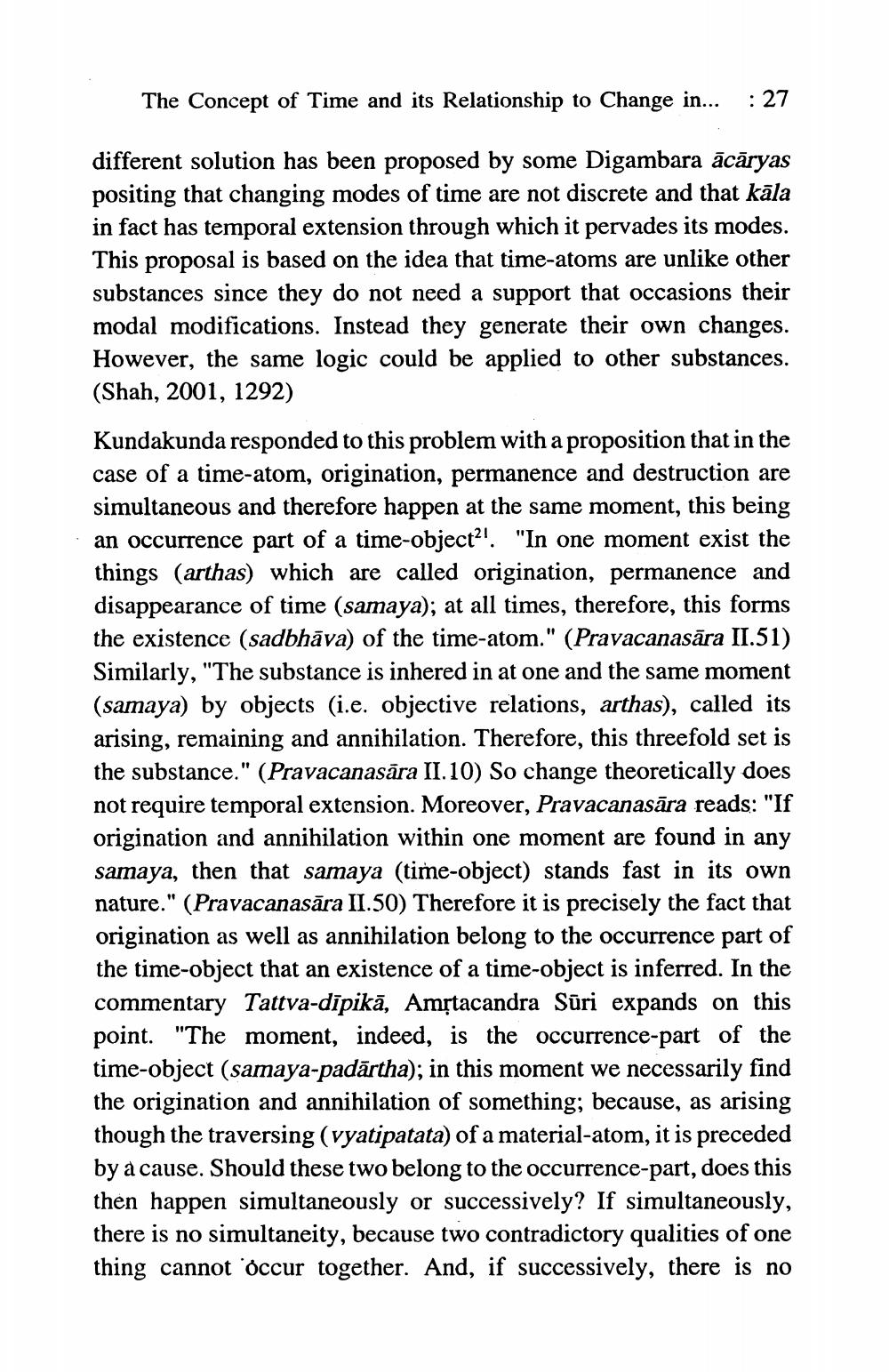________________
The Concept of Time and its Relationship to Change in...
: 27
different solution has been proposed by some Digambara ācāryas positing that changing modes of time are not discrete and that kāla in fact has temporal extension through which it pervades its modes. This proposal is based on the idea that time-atoms are unlike other substances since they do not need a support that occasions their modal modifications. Instead they generate their own changes. However, the same logic could be applied to other substances. (Shah, 2001, 1292)
Kundakunda responded to this problem with a proposition that in the case of a time-atom, origination, permanence and destruction are simultaneous and therefore happen at the same moment, this being an occurrence part of a time-object?!. "In one moment exist the things (arthas) which are called origination, permanence and disappearance of time (samaya); at all times, therefore, this forms the existence (sadbhāva) of the time-atom." (Pravacanasāra II.51) Similarly, "The substance is inhered in at one and the same moment (samaya) by objects (i.e. objective relations, arthas), called its arising, remaining and annihilation. Therefore, this threefold set is the substance." (Pravacanasāra II.10) So change theoretically does not require temporal extension. Moreover, Pravacanasāra reads: "If origination and annihilation within one moment are found in any samaya, then that samaya (time-object) stands fast in its own nature." (Pravacanasāra II.50) Therefore it is precisely the fact that origination as well as annihilation belong to the occurrence part of the time-object that an existence of a time-object is inferred. In the commentary Tattva-dipikā, Amrtacandra Sūri expands on this point. "The moment, indeed, is the occurrence-part of the time-object (samaya-padārtha); in this moment we necessarily find the origination and annihilation of something; because, as arising though the traversing (vyatipatata) of a material-atom, it is preceded by a cause. Should these two belong to the occurrence-part, does this then happen simultaneously or successively? If simultaneously, there is no simultaneity, because two contradictory qualities of one thing cannot occur together. And, if successively, there is no




